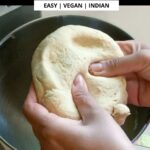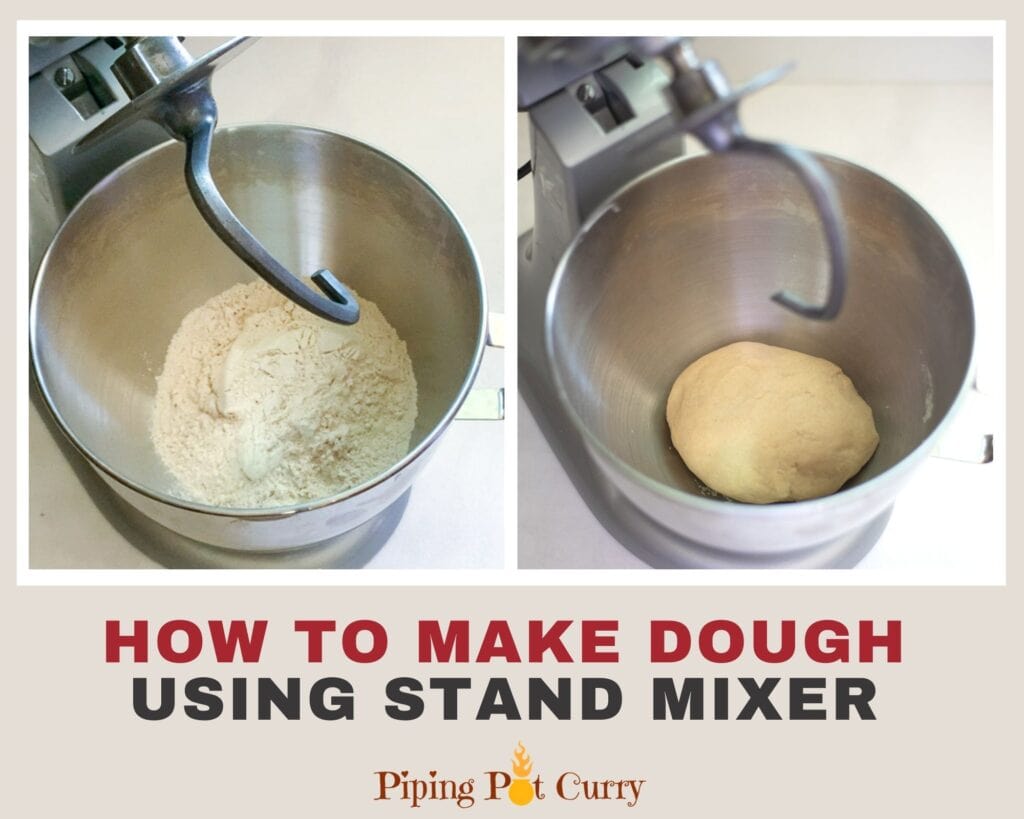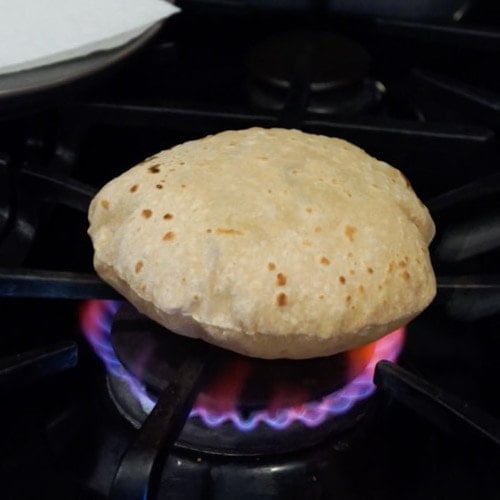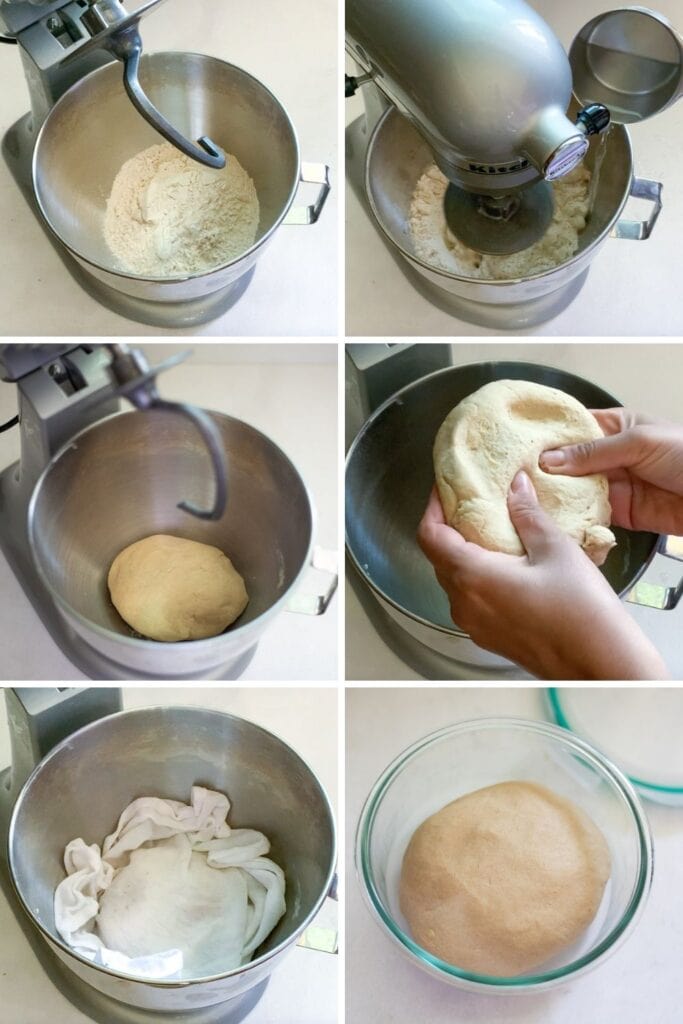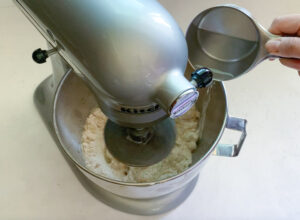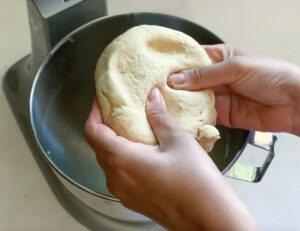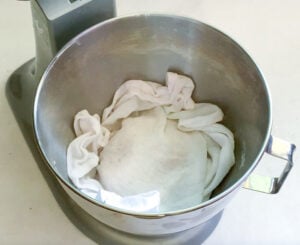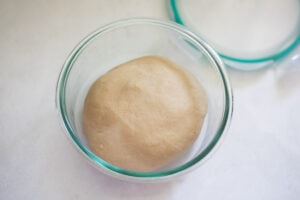Make perfect dough using this electric mixer in just 5 minutes and make soft roti’s every time! I hate to knead dough by hand…period! Once the dough is ready, I am happy to make any number of Indian breads such as roti’s, paratha’s, poori’s or even pizza’s. Making dough can get messy and sometimes sticky, the dough gets in your nails and then it takes time to clean hands. Once I discovered the kitchenaid stand mixer to make dough, there was no looking back. No more frozen roti’s or store bought roti’s. I don’t mind making fresh roti’s even multiple times a day. This is the second most used gadget in my kitchen. I use it to make dough for roti’s, paratha’s, poori and even pizza for my family. This stand mixer also comes in handy for many cakes and baking recipes. The important thing to note – Make sure to get the dough hook when you buy your kitchenmaid mixer.
Watch How to Make Roti Dough using Stand Mixer
The secret to Soft Roti’s
To make perfect soft roti’s, what you need is perfectly kneaded dough. The dough should be soft and supple, but not sticky. See my recipe to knead dough by hand and make roti’s. Here I will show how you can make the same perfectly kneaded dough using the kitchenaid stand mixer.
Why use the kitchenaid stand mixer for roti dough?
There are so many electric dough mixer machines and food processors in the market. I am sure you would be thinking why is kitchenaid the best mixer to make dough for roti/chapati. Let me share the 5 reasons why I love the kitchenaid mixer:
How to make chapati dough using kitchenaid?
All you need to make roti (also called chapati or phulka) dough is whole wheat flour and water. You can add salt and some oil, but these are completely optional. I have a 4.5qt Kitchenaid stand mixer. Other popular sizes are 5qt and 6qt. In the 4.5qt mixer, you can make dough from 2 cups of flour. In the larger sizes, you might need a minimum of 3-4 cups. Typically for 2 cups of whole wheat flour, I use 1 cup of water. This 2:1 ratio works perfectly for the Aashirwad Aata I use. If you are using another brand of whole wheat flour, you might need to adjust the amount of water. That said, always start with a little less water, and then adjust as needed by checking the dough. Start with about 3/4 cup and add more as needed. Always use the dough hook and set it to the lowest speed to make dough. If needed, stop and scrape the sides to incorporate all the atta. When the dough has almost come together, you can add a teaspoon of oil (or you can do it at the end with your hands too). The bowl of the stand mixer will be almost clean once the dough is formed. Pick up the dough or press your fingers against it to make sure it is soft and pliable. When you press your finger against the dough, it should leave an impression. You can also take a little oil in your palms and knead the dough for a minute. This will help to make it non-sticky and soft. Cover the dough with a damp cloth or cling film for about 15 minutes before using. Now the dough is ready to store or use right away!
How to store Roti Dough?
You can store Roti Dough in the refrigerator for up to 2 days in an air tight container. To store for longer, you can freeze it. Divide the dough into small quantities, you can use at one time and store in ziploc bags or freezer safe containers. Thaw overnight in the refrigerator to use.
Mixing veggies or lentils when making dough
I love that it is easy to mix veggies or lentils when making dough using kitchenaid stand mixer. Keep in mind is to start with less water when mixing veggies that release water. eg. radishes (mooli), spinach, fenugreek leaves (methi). When making dough with lentils, I usually just add just lentils and no water. Depending on the amount of leftover lentils, add water as needed. This is very convent way to add nutrition to your or your kids meal. My daughter is a picky eater. I feel happy even if she just eats the paratha made with dough that has both lentils or veggies, so she is at least getting some nutrition along with the carbs.
Tips for a perfect chapati dough
When making dough, always keep the stand mixer at the lowest setting. The amount of water you use for making the dough can vary based on the quality and the thickness of flour used (Punjabi’s often use coarse whole wheat flour). So start with a little less water, and add more as needed. Once you have figured out the perfect amount of water, it is okay to add it all at once. Check that the dough is to your preferred softness. eg. For roti’s you want soft dough, while for poori’s a little less soft works better. Once ready, cover the dough and let it rest for at least 15 to 30 minutes before using.
Hope you enjoy making dough using the stand mixer. I assure you once you give this a try, there is no going back! Here are my roti, paratha, paneer paratha and aloo paratha recipes with all the tips and tricks to make them perfect every time.

